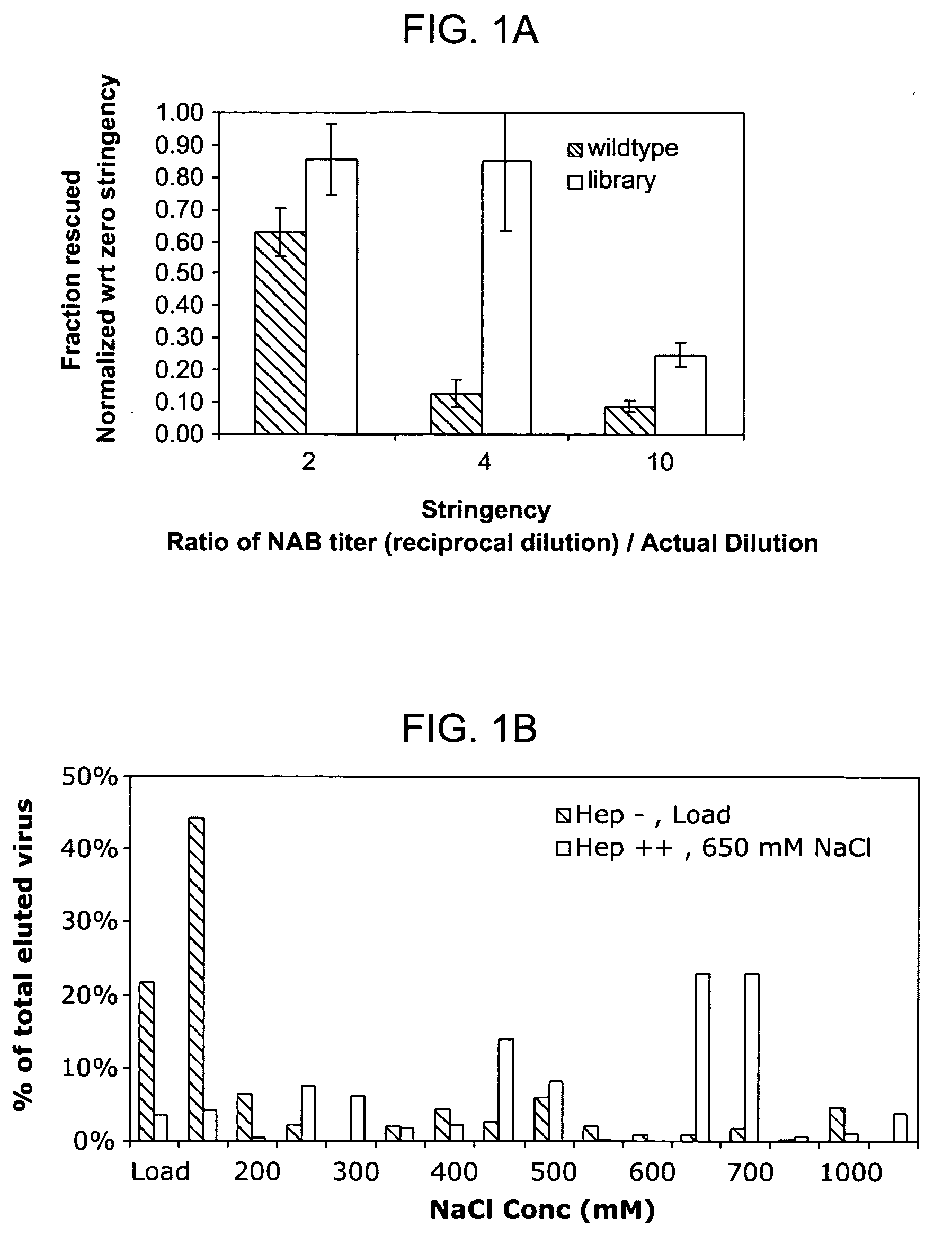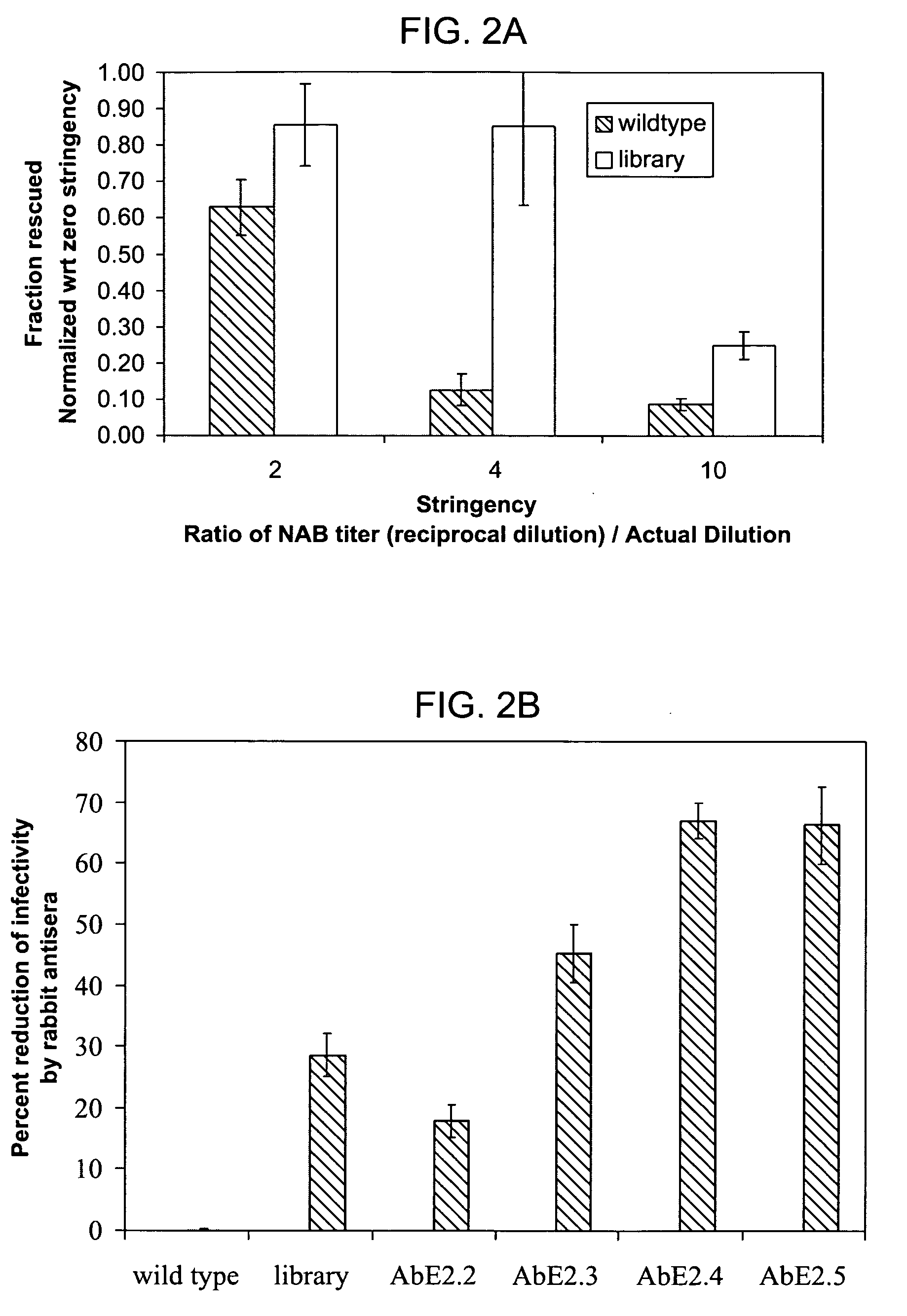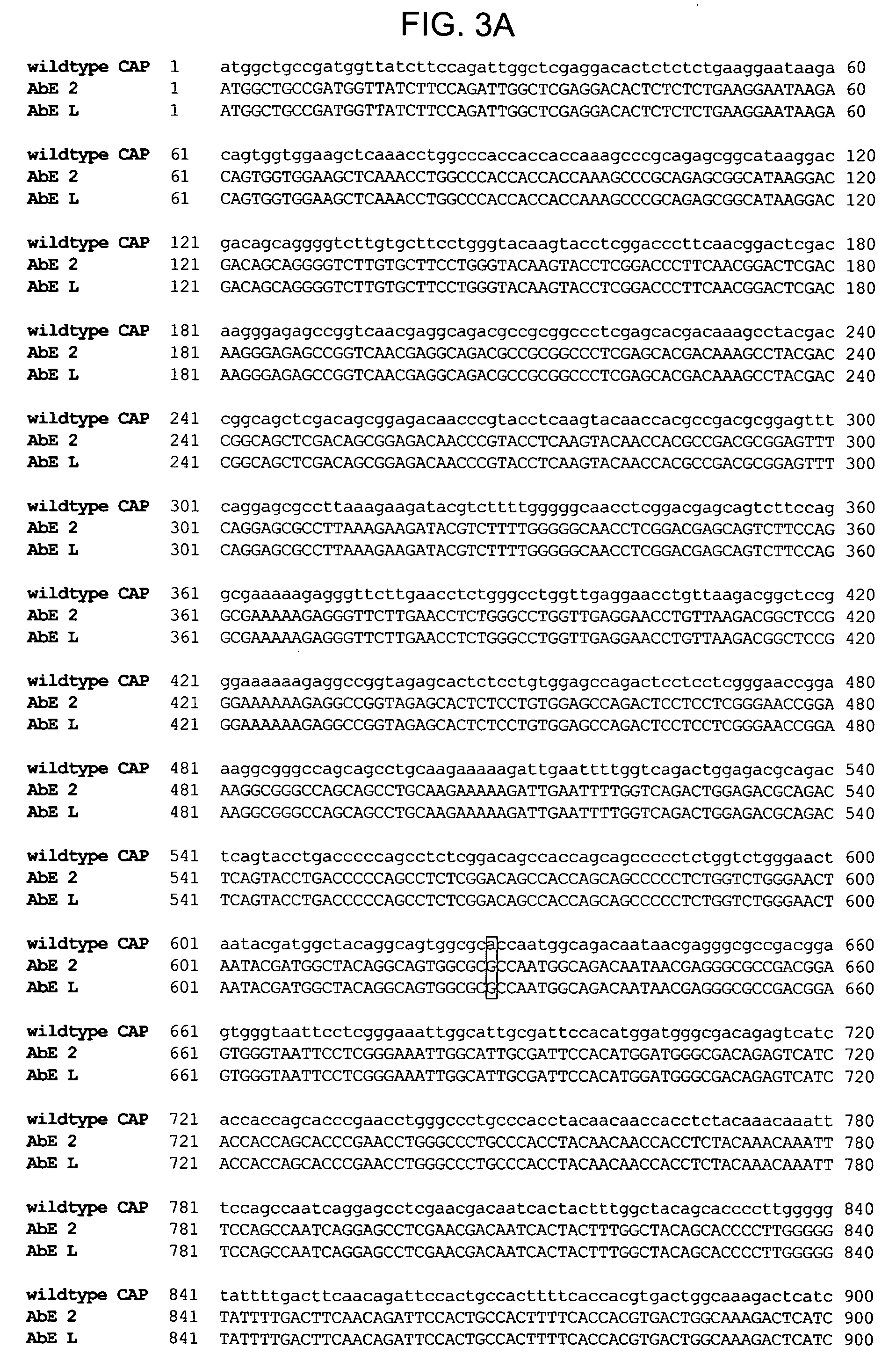Mutant adeno-associated virus virions and methods of use thereof
- Summary
- Abstract
- Description
- Claims
- Application Information
AI Technical Summary
Benefits of technology
Problems solved by technology
Method used
Image
Examples
example 1
Generation and Characterization of AAV Capsid Variants
[0209] Methods
[0210] Library Generation and Vector Packaging
[0211] An AAV2 cap ORF genetic library was generated using the staggered extension process described by Zhao at al. ((1998) Nat. Biotechnol. 16:258-261), and the resulting cap product was inserted into a plasmid containing the wild type AAV2 genome. The result was transformed into E. coli for large scale plasmid production and purification. AAV was then produced and purified by CsCl centrifugation essentially as previously described (Kaspar et al. (2002) Proc. Natl. Acad. Sci. USA 99:2320-2325; and Lai et al. (2003) Nat. Neurosci. 6:21-27). Briefly, the library plasmid DNA was transfected into 293 human embryonic kidney cells (ATCC) using the calcium phosphate method, followed by addition of serotype 5 adenovirus (Ad5) at a multiplicity of infection (MOI) of 3. Virus was purified using CsCl density centrifugation. For all experiments, the AAV genomic titer was determi...
example 2
Characterization of Further AAV Capsid Variants
[0232] AV mutants—including antibody evaders, mutants with reduced heparin binding, and mutants with increased heparin binding—were generated as follows.
[0233] Library Generation:
[0234] A combination of error prone PCR and the staggered extension process (StEP) was used to generate a library of mutant DNA fragments encoding the capsid protein. This library was then inserted into a plasmid in order to package it into virus, by transfection of these plasmids plus an adenoviral helper plasmid into 293 cells. The library was then purified by cesium chloride density centrifugation.
[0235] Selection:
[0236] The library was then passed through screening steps. For example, for the antibody evasion mutant, a sample of the library was mixed together with polyclonal anti-AAV antiserum, then added to 293 cells. Addition of adenovirus amplifies the variants that are able to successfully evade the antiserum.
[0237] After amplification of the ‘suc...
PUM
 Login to View More
Login to View More Abstract
Description
Claims
Application Information
 Login to View More
Login to View More - R&D
- Intellectual Property
- Life Sciences
- Materials
- Tech Scout
- Unparalleled Data Quality
- Higher Quality Content
- 60% Fewer Hallucinations
Browse by: Latest US Patents, China's latest patents, Technical Efficacy Thesaurus, Application Domain, Technology Topic, Popular Technical Reports.
© 2025 PatSnap. All rights reserved.Legal|Privacy policy|Modern Slavery Act Transparency Statement|Sitemap|About US| Contact US: help@patsnap.com



